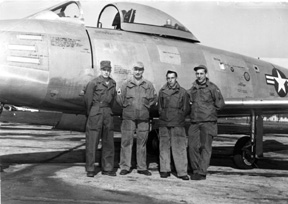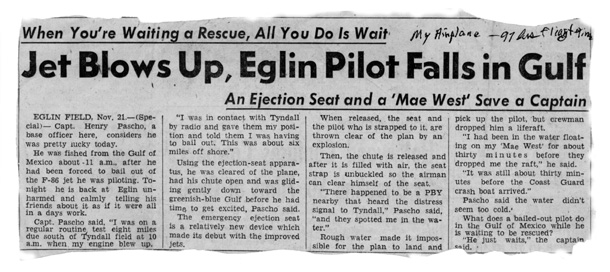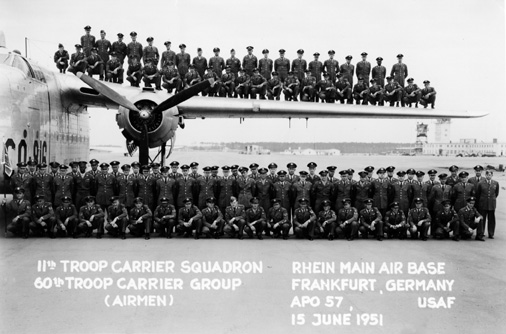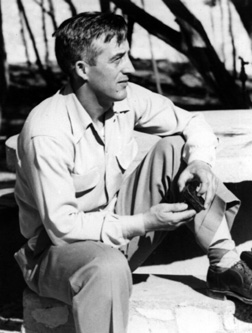Biographical Notes reRobert H. (Bob) WeisburnCHAPTER # 4 |
||||||||||
| When I arrived at Eglin, the Master Sergeant in charge was glad to see me because they were having trouble with the jet engines. He said my paper work carried me as a fully qualified Jet Engine Specialist and I would have to prove myself proficient or loose my rating. I reported to Jet Engine Buildup and was able to perform Tech Order Compliance within about a day and a half. This was due to my Tool and Die experience. Needless to say, I was promoted to Staff Sergeant within five and a half months and began crewing on the F-86 Saber Jets. A bit later, I was sent back to Chanute Air Base for an Instrument Specialist course and returned to Eglin AFB with an additional technical qualification. |
||||||||||
 |
||||||||||
|
L to R: S/Sgt. Nolie Cochran, |
||||||||||
 |
||||||||||
| To meet the demands of the Berlin Airlift, I was transferred to Rhein Main AFB as a Specialist Chief, 60th Troop Carrier Group, operating C-82, propeller driven cargo planes. While there I became a Crew Chief and Specialist Chief relating to tires, tubes, instruments, electrical welding and the whole works. I was soon promoted to Tech Sergeant. When the Personnel Department offered me the opportunity to return to officer status with the rank of 2nd Lt., I accepted, with pleasure. |
||||||||||
 |
||||||||||
|
|
||||||||||
 |
Shipped back to the U.S., I was assigned to James Conally AFB, Waco, Texas. I arrived in the middle of a Bombardier Class. Although I did not have the opportunity to take the Norden Bomb Sight refresher course, I was assigned as an in-flight instructor in B-25s. We were using the Lomita Bomb Range at the time. With little warning, a fellow instructor, Ralph Burgess, and I were shipped to Mather AFB for Photo Navigator training and on to Randolph AFB for crew assignment. We arrived at Randolph at a time when the B-29s were gradually being returned to active flying status after a temporary discontinuance of flight training due to engine problems. When we arrived, there was only one B-29 crew in flight training, while other crews were being shipped out to stateside assignments with academic training only. |
|||||||||
|
|
||||||||||
|
This crew had completed transition training and had just begun their bomber crew procedure flight training. The crew, scheduled for assignment to the 98th Bomb Wing, Yokota AB, Japan, had been offered a change from bombardment to reconnaissance duties. They had accepted the assignment change. I immediately joined their crew as a photo navigator and we began our photo mapping missions and furthered the process of developing our full sense of crew coordination. The crew that I joined, is the same crew that is described in some detail on this web site. If you would like an in-depth look at our experiences with the 91st SRS, Yokota Air Base, you may click here to visit.
|
||||||||||
|
End Chapter # 4 Click below to select a destination Table of Contents — This Story |
||||||||||